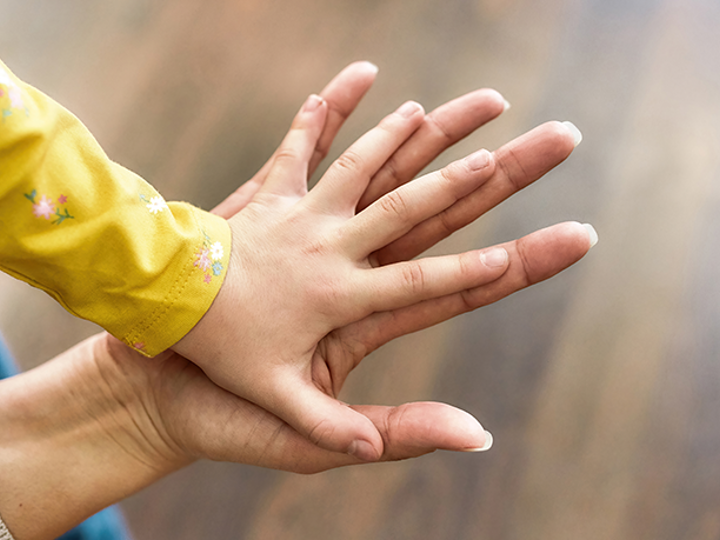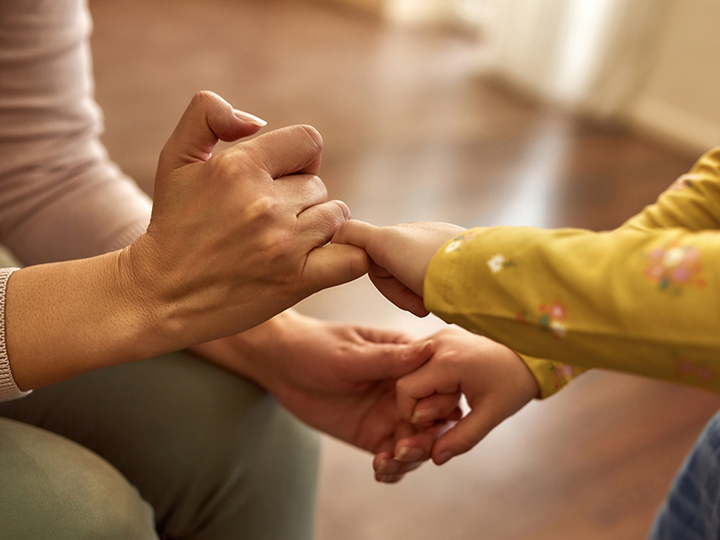For professionals - Child protection medical assessment

A child protection medical assessment is a medical assessment completed when safeguarding concerns have been raised and the assessment has been requested as part of a strategy meeting or after discussion with the duty paediatrician.
This service is for:
- children and young people (from 2 to 18 years old) with injuries that do not need immediate medical attention
- children and young people with signs of neglect
Explore the topics on this page:
Requesting a safeguarding medical assessment
Requesting a safeguarding medical assessment
To request a safeguarding medical assessment please download and complete the referral form.
Referrals to Community Paediatric Services
You can refer to this service for:
- physical abuse in children over 2 years old
- concerns of neglect in children aged 0 to 19 years old
Referrals to Hospital Paediatric Services
You can refer to this service for:
- physical abuse in children under 2 years old
- all out of hour referrals (Monday to Friday after 5pm, weekends and public holidays)
Concerns about urgent medical care
If there are concerns that the:
- child or young person's injuries need urgent medical care
- child is under 2 years old
Refer to your local acute paediatric hospital immediately. Contact the switchboard and ask to speak to the Paediatric Consultant on call.
In a medical emergency
Call 999 if it's a medical emergency.
If you have concerns about sexual abuse, contact the Sexual Assault Referral Centre (SARC) on 0800 1935 434
Consent
The assessment cannot take place without consent.
If an interpreter is required, it is essential that you inform us before the assessment.
A social worker will be expected to accompany the child or young person to the medical assessment. The social worker may be asked for information about the case.
Before the examination takes place, we will ask for consent from the person with legal responsibility of the child or young person.
Please ensure that the child or young person is accompanied by someone who can give consent. If you feel it is appropriate, this can be the parent or carer. It can also be their designated social worker.
If the child or young person is old enough, they may also be asked to consent alongside the person with legal responsibility.
We may also ask for consent to take photographs of any relevant findings for medical records and peer review.
Photography
The doctor may feel that it is important to photograph and document any of the marks or injuries seen during the examination. This will be fully explained at the assessment. The photographs will be taken by the examining doctor. These may be used to peer review and teaching/training purposes only.
The photographs will not be sent as part of the report. The photographs will be stored securely with the child's medical records. They are not suitable for evidence in court.
What will happen at the assessment
The following steps will be taken at the assessment.
- The child's height and weight will be checked.
- The doctor will take a history from the person accompanying the child or young person (parent, carer or designated social worker). They will access the child or young person's electronic record for past medical information.
- The doctor will then examine the child or young person. We will endeavour to have a chaperone present for the medical assessment.
- If there are any marks or bruises, these will be photographed and carefully documented.
The doctor will discuss any concerns from the examination with the parent, carer or designated social worker. If appropriate, the doctor may also discuss it with you.
The doctor will discuss whether the child or young person requires any further investigations or referral to other services.
A report will be written by the doctor. This report will be sent to you, the GP, health visitor or school nurse and local acute hospital.
How to get to the assessment centre
The Edwin Lobo Child Development Centre
Edwin Lobo Centre, Redgrave Gardens, Luton, LU3 3QN
There is a car park at the front of the building.
Child Development Centre (CDC)
Child Development Centre, Hill Rise, Kempston, Bedford, MK42 7EB
There is parking available at the front of the building.
Directions to the Edwin Lobo Centre
Leave the M1 at junction 11 and proceed along the A505 towards Dunstable/Luton. At the roundabout take the 3rd exit onto Dunstable Road. Turn left onto Stoneygate Road and then right onto the High Street. The High street becomes Grange Avenue. At the roundabout take the 2nd exit onto Bramingham Road. Take the 2nd exit at the next roundabout and then the 1st exit at the next roundabout onto Northwell Drive. Turn right onto Redgrave Gardens and the centre is at the end of the turning.
Directions to the Child Development Centre (CDC)
From Bedford take the A600. Turn right onto Kingsway Link and then right again onto Kingsway. Use the middle lane to turn slightly left onto Cauldwell Street/Kingsway. Continue onto Kempston Road/B531. At the roundabout, take the 2nd exit onto High Street. Continue onto Ridge Road. Turn left onto Hill Rise and then take a slight right.
Last reviewed: 1 November, 2024

